Members of VP–56, circa 1955–1960, met in Norfolk, Va. last October to rekindle memories, share sea stories, and pay tribute to shipmates both living and departed. Although few in number but high in spirit, the group toured Norfolk Naval Station, enjoyed refreshments in the hotel Ready Room and dined together at the Free Mason Tavern
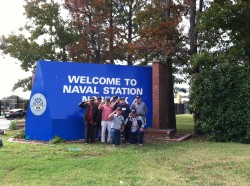
Squadron members rendering a salute to former shipmates. From left to right standing are Chief Larry Mondy (VA.), Sal Mantineo (DE.), Charles “Greek” Galowina (OH.), Joe Smilling (VA.), Vince Geraldi (N.J.), John Fugett (AL.).
Kneeling are Ken “Stoney” Field (ME.) and Bill Payne (VA.)
Members of VP–56, circa 1955–1960, met in Norfolk, Va. last October to rekindle memories, share sea stories, and pay tribute to shipmates both living and departed. Although few in number but high in spirit, the group toured Norfolk Naval Station, enjoyed refreshments in the hotel Ready Room and dined together at the Free Mason Tavern and Restaurant. On the Naval Station tour, two carriers (USS Abraham Lincoln and USS Dwight D. Eisenhower) were at berth along with several other attack ships. Security was tight and visitors were not allowed to leave the tour bus. Nevertheless, all were thrilled to see their old barracks and the seawall at Breezy Point. Very little remains of the hangars or sea plane ramps, but the group couldn’t help but envision the halcion days of flight lines, P5M’s, and the ebb and flow of a busy Naval Air Station.
Another highlight of the reunion was the sharing of letters sent by squadron members unable to attend. George Reed, Russ Farris, Amos Marck, to name a few, sent in vivid personal accounts of close calls and recollections of shipmates and memorable events, both good and bad! Russ Farris’s “A Seaplane Story” is one of them.
A Seaplane Story by Russ Farris
For each of my grandchildren’s birthdays I write them a story about the “olden days.” The following is an excerpt from a story I wrote for my grandson’s eighth birthday.
My best friends in VP-56 were Les Kuhn and Roy Whitson. Roy and I were on the same aircrew, and one morning we went out to preflight our P5M. I walked through the back of the airplane and up the ladder (stairs) to the “flight deck.” I didn’t know it, but a mechanic named John Belk had gotten on the airplane right after me. He climbed up a ladder (a real ladder) and opened a hatch between the wings. The hatch was right over the auxiliary power unit (APU). John crawled out of the hatch and walked across the wing to inspect one of the engines.
Roy climbed up the same ladder that John had climbed and checked the oil in the APU. When he saw that there was plenty of oil, Roy climbed down and walked forward, yelling up the ladder (stairs) to tell me that I could start the APU. I started it, and it blew up.
It was like a bomb. Parts of the APU flew through the side of the airplane, and through the sides of other airplanes hundreds of feet away. The burning oil from the APU was dripping down on the flares and practice depth charges that we had just put on the plane.
A huge column of fire and smoke was pouring out of the hatch that John Belk had just crawled through, so he was trapped on the top of the airplane. John was pretty cool. He walked out to the end of the wing, sat down, and lit a cigarette. Someone on the ground yelled at him to put the cigarette out, but John just laughed and kept on smoking. He didn’t think his cigarette was likely to set the plane on fire—since it was already on fire.
Roy and I grabbed small fire extinguishers and tried to put out the fire, but it was too big. Burning oil was dropping on us, burning holes in our clothes. The wooden outer parts of the flares were burning, but the magnesium in the flares had not ignited.
When our fire extinguishers were empty, Roy and I ran forward and started to climb out of the plane. Before we got out, a Parachute Rigger named Tony Palmieri grabbed a huge fire extinguisher and drug it up to the door of the plane. He climbed into the plane and turned on the large fire extinguisher. In a few minutes he put the fire out. John Belk put his cigarette out then.
The whole thing had lasted maybe five minutes from the time I tried to start the APU until the fire was put out, but Roy, John, Tony and I had inhaled a lot of smoke, and Roy and I had a lot of small burns. We were taken to the hospital, but we were back down at the VP–56 hangar in a couple of hours.
When we got back to the hangar, there were high–ranking officers and civilian engineers all over the place trying to figure out what happened. I thought I had done something wrong, but I was eventually cleared by Navy investigators.
I’m still in touch with Les Kuhn but I’ve lost contact with Roy Whitson. John Belk was a member of the Belk family that owns the department stores throughout the South. I am not absolutely sure that Tony Palmieri was the name of the parachute rigger that saved the plane and our butts. The story of why the APU blew up is a long one and not as interesting………………. Russ Farris
12 comments
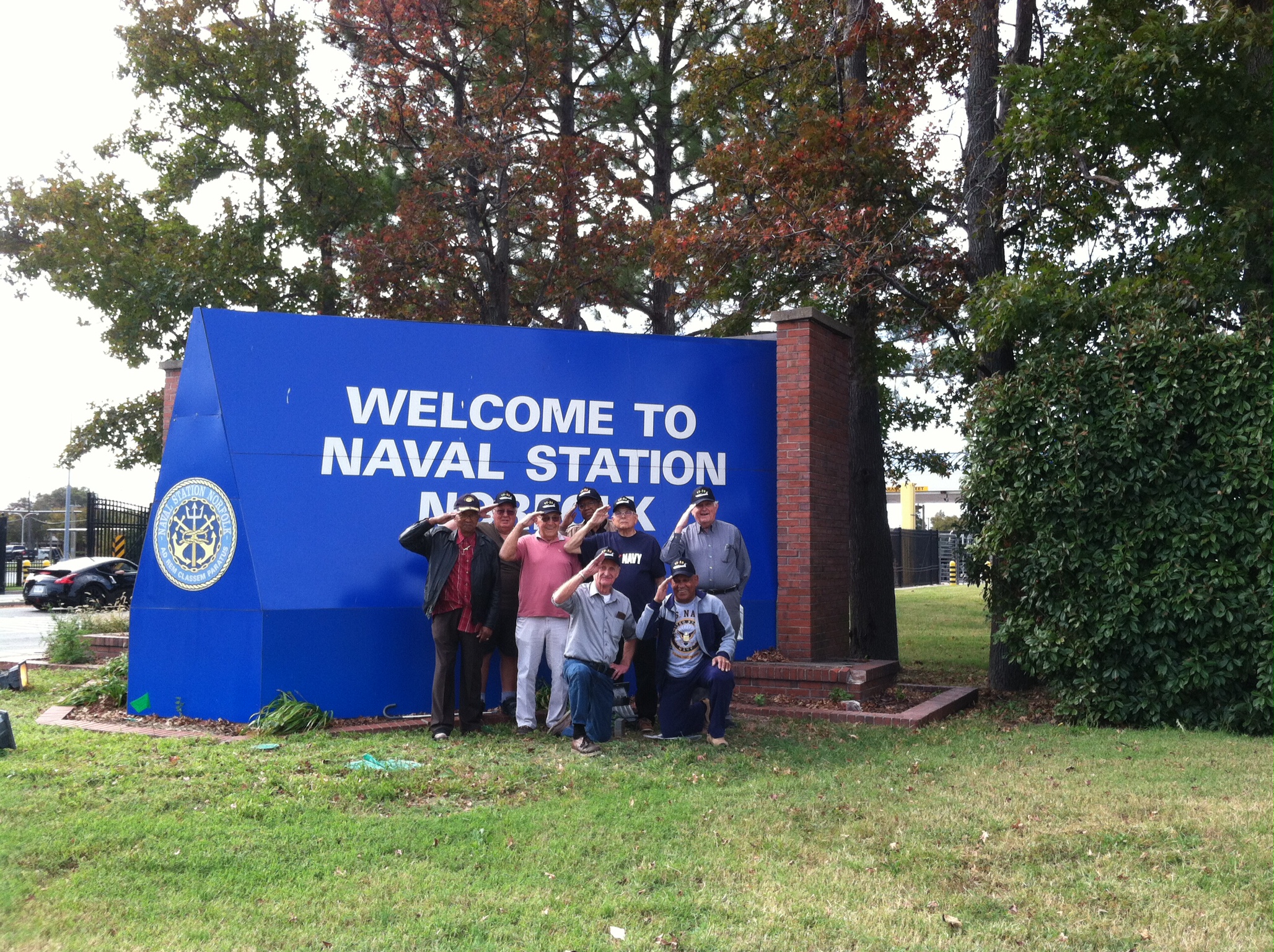
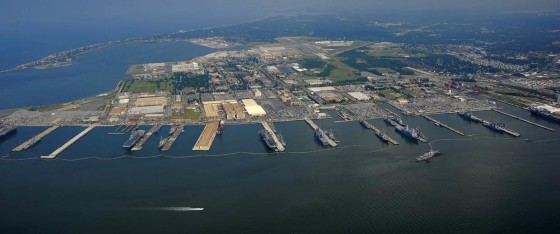
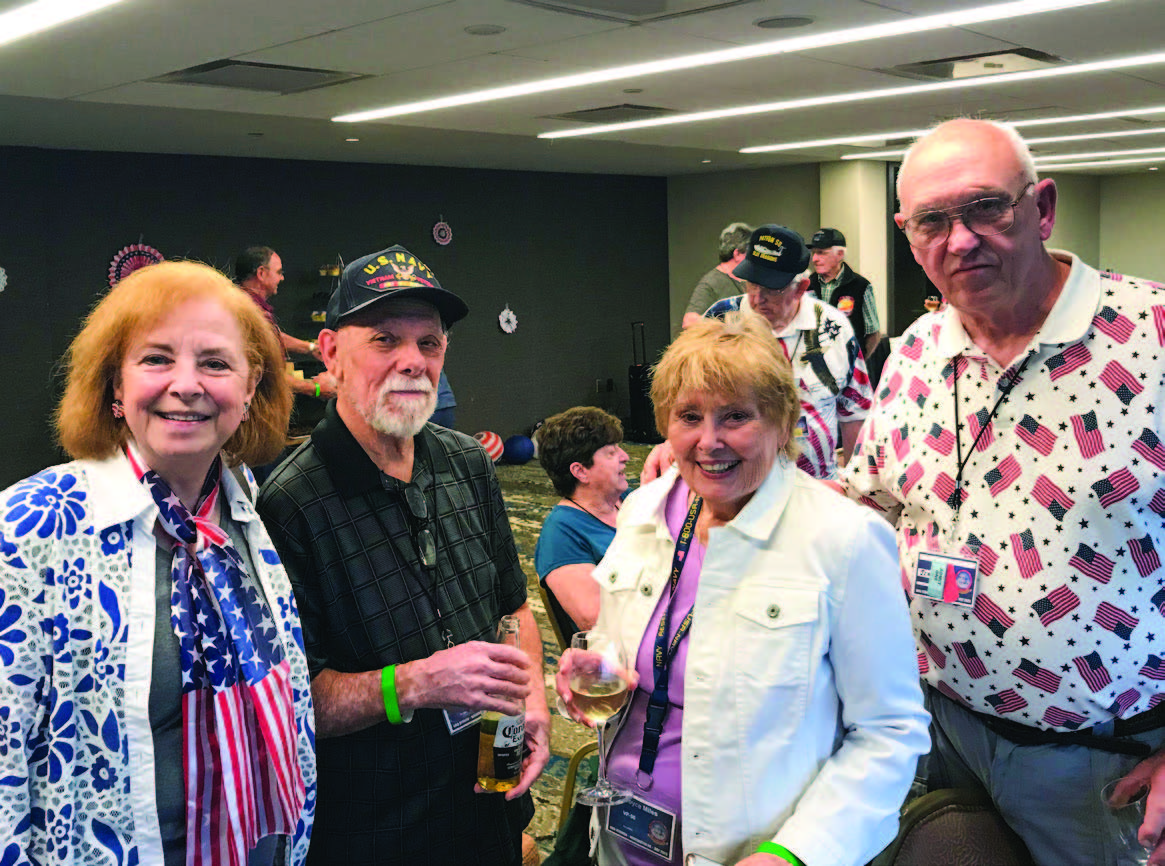
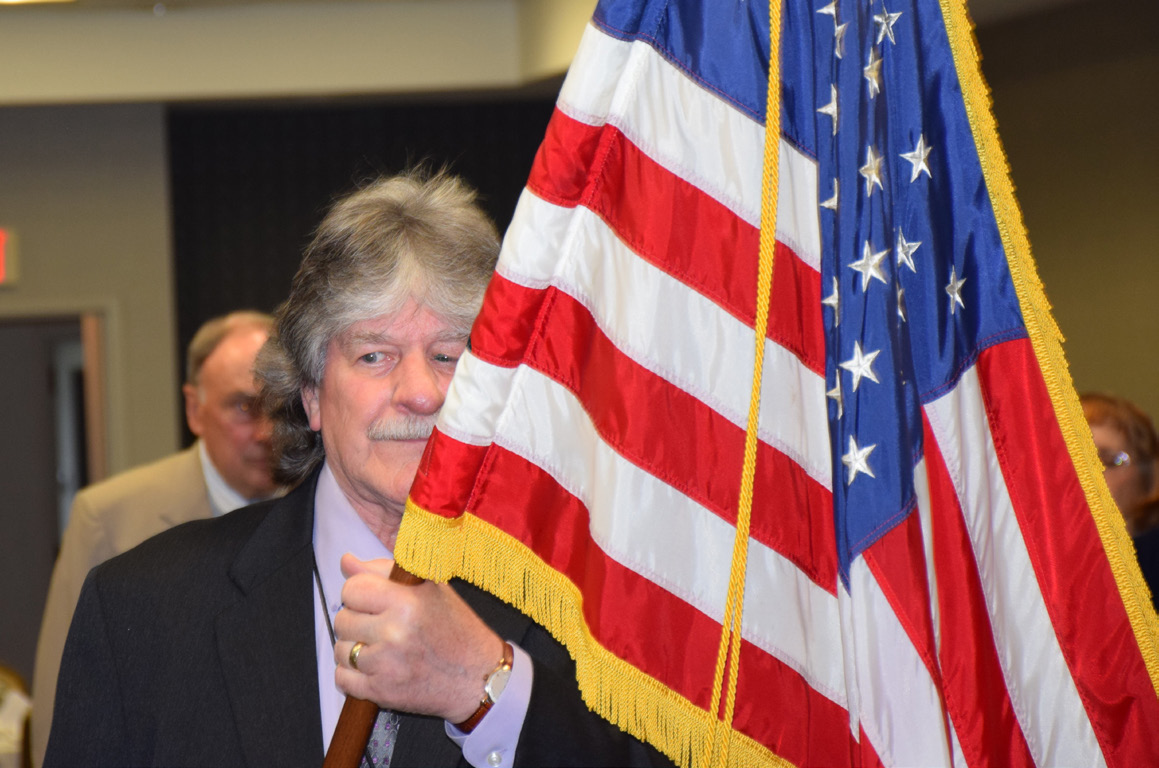
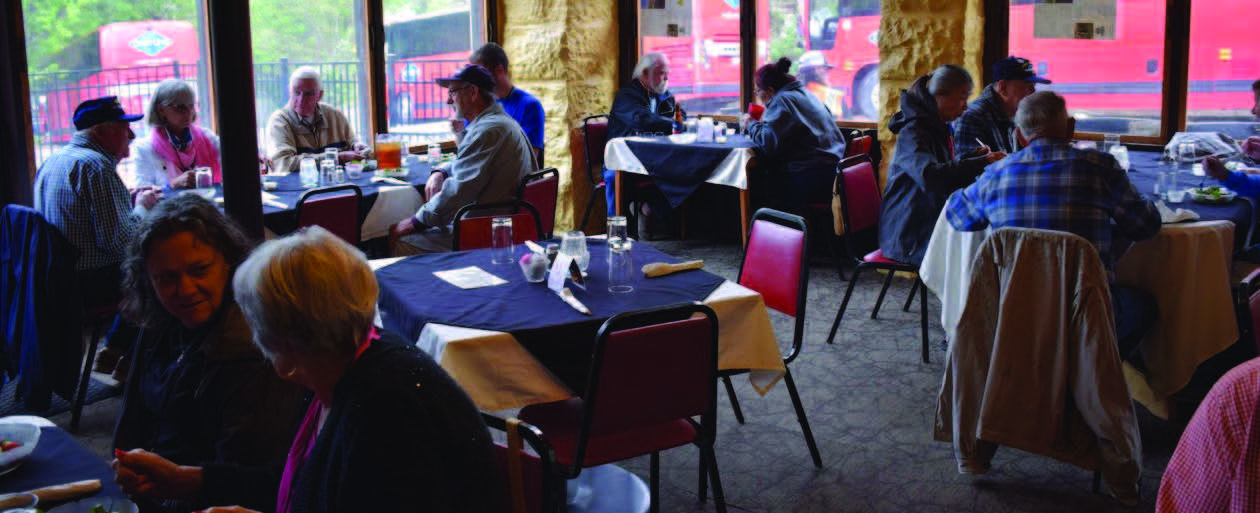
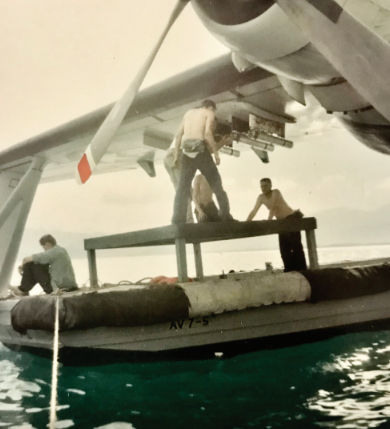
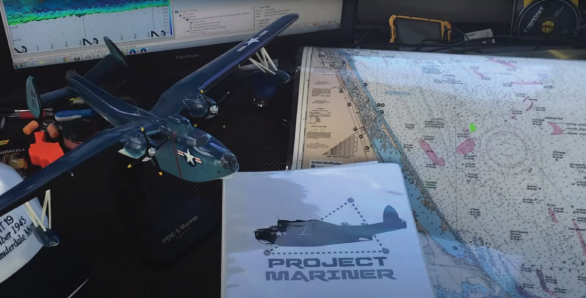

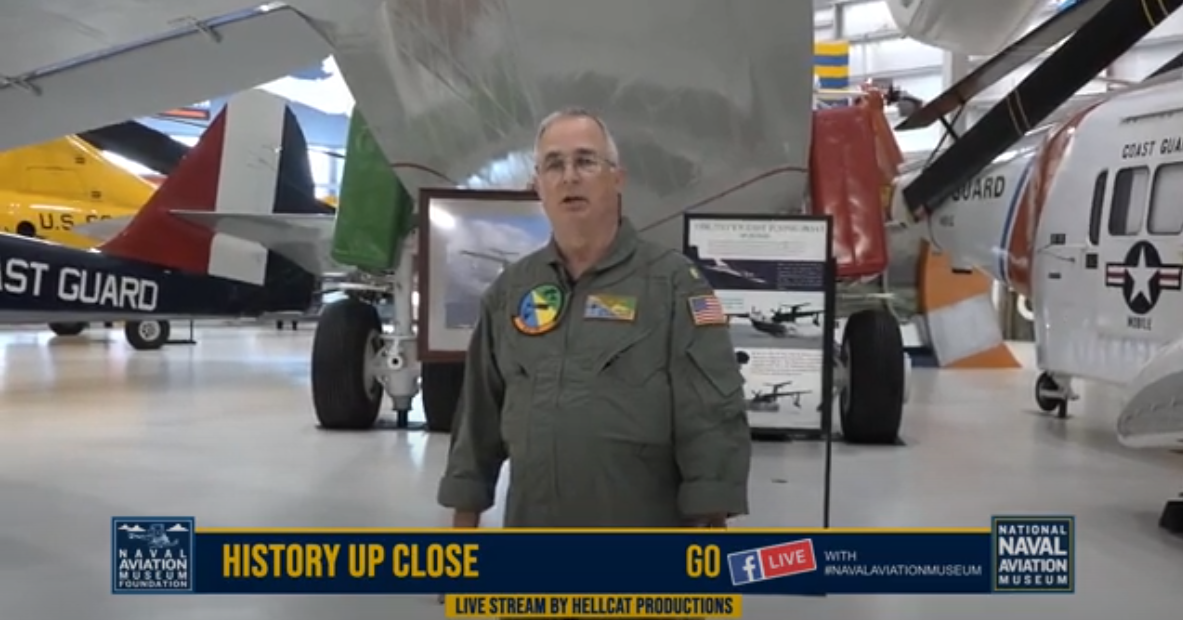
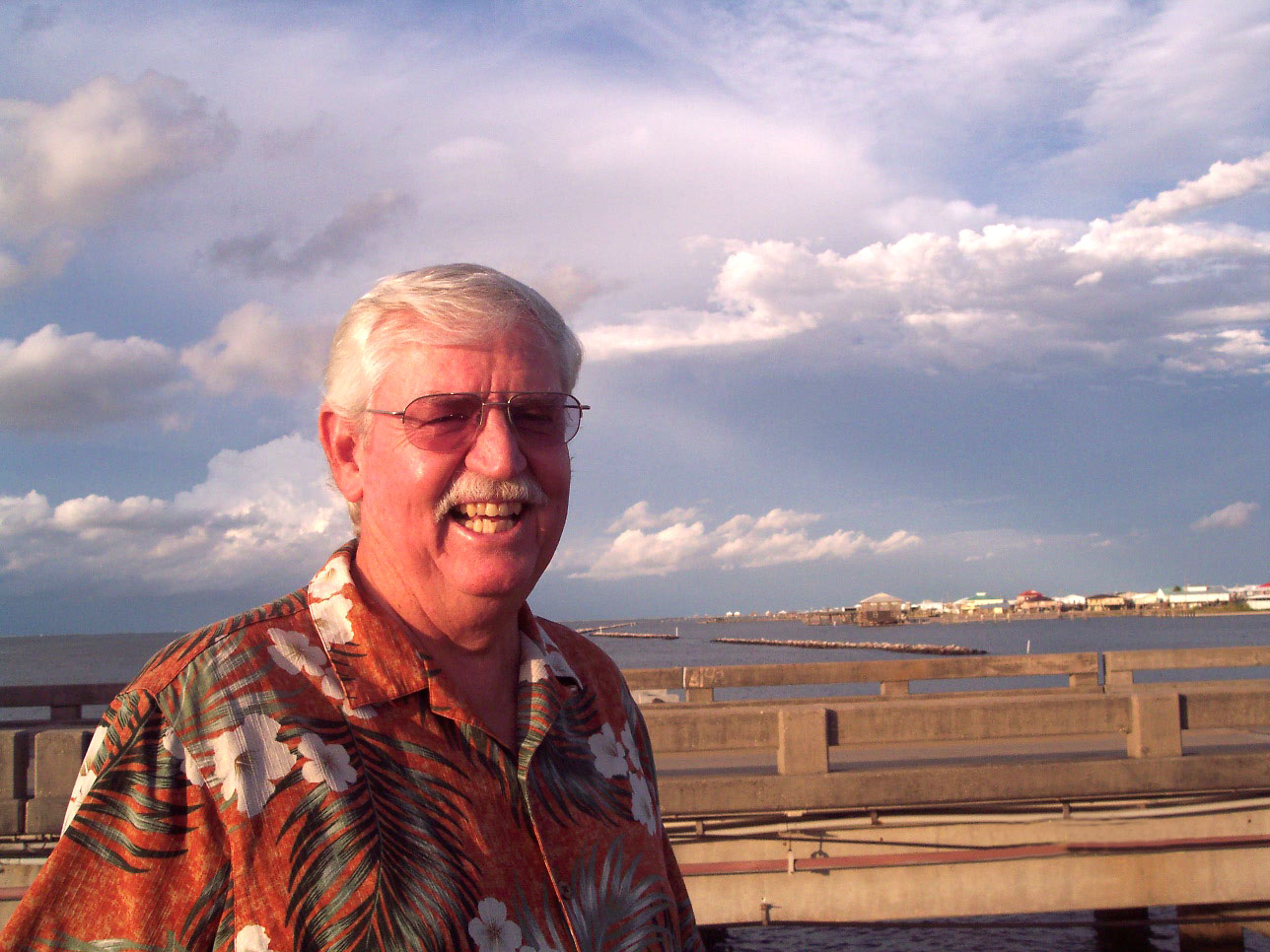
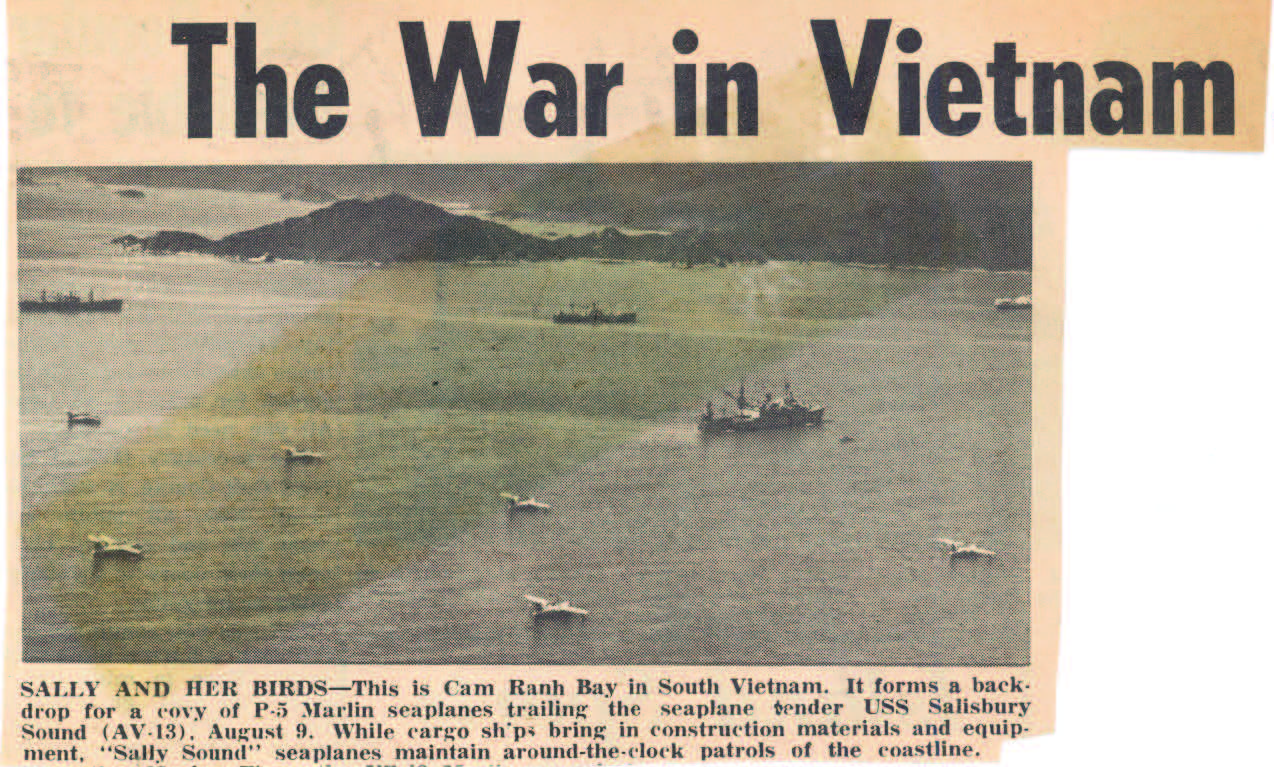
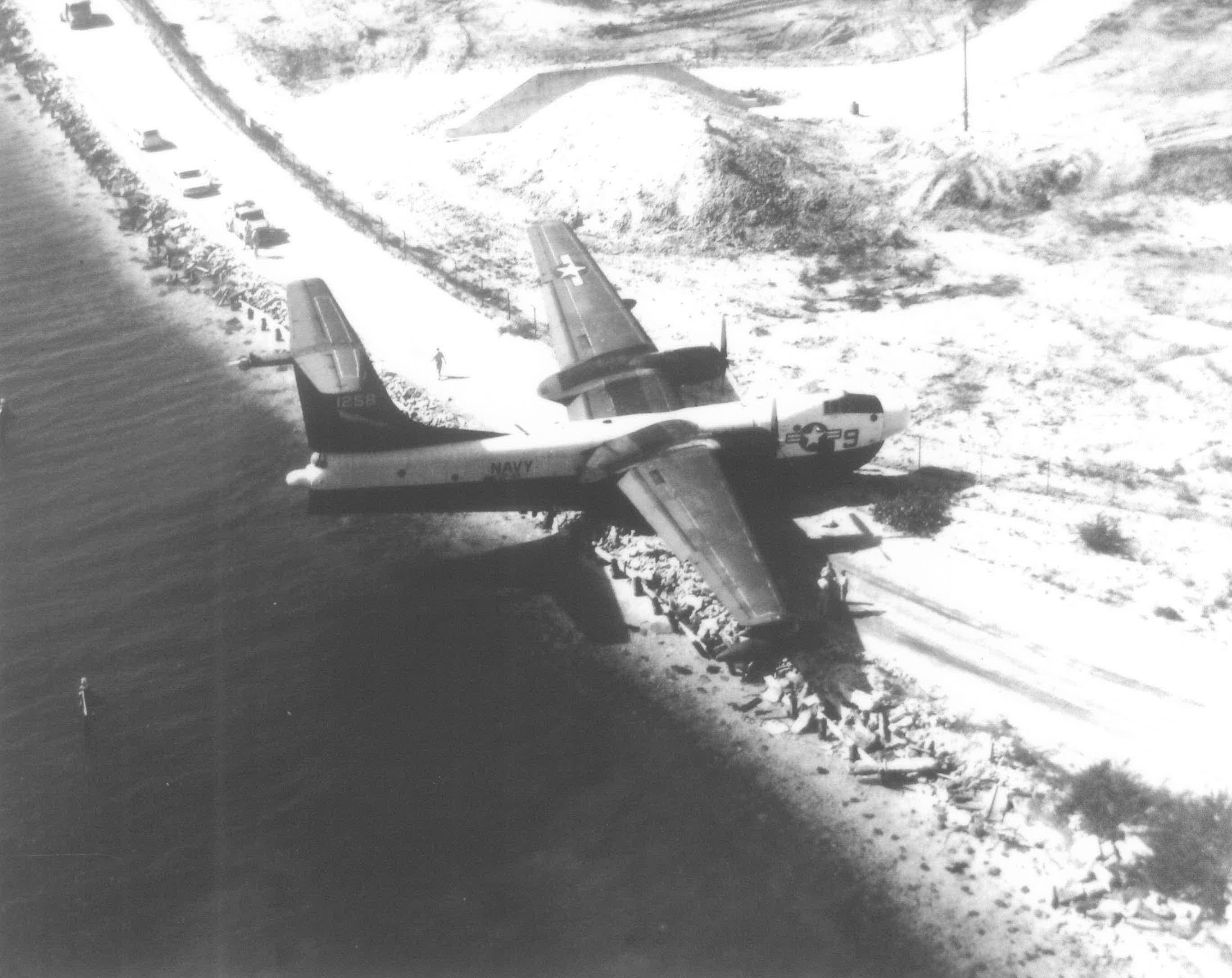
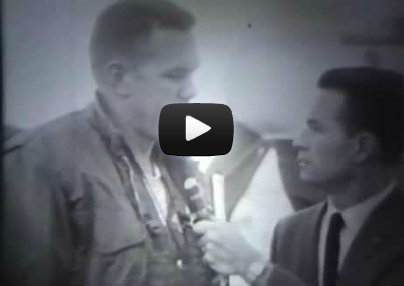
12 Comments
Jim Hansen
December 3, 2016, 19:18I’ve been trying to get information on VP-56.
REPLYI was a radio operator on P5M-2 call letters 2S40 from 1958-59.
A long time ago.
I’ll never forget NAS Norfolk and the times we had there.
Lots of touch and goes and runs to Bermuda and Key West.
PJ IMHOF
August 6, 2017, 22:29I was assigned to VP-56, after the disestablishment of VAH-15, in hangar SP-31. Big move!! While in P5M school, i and another 2nd class were told to report to the VP-56 ops. Officer. We were being taken out our AM rating and going to be checked out as beachmasters.
The Admiral at the Wing didn’t want want anymore E-3’s or 3rd class ruining another a/c. If one would be damaged, they could easly make E-3’s, or lower out of us !!
Bodenheimer, AM1 worked a swap with the other 2nd class.
Finally got to the AM shop, but my hitch was about up.
Chief Swords was the Leading Chief and Career Counsler. He always treated me great.
I ran into Joe Hiram Walker on the USS HORNET, when he was in a VAW-111 Det. and I was in HS-2.
REPLYJIM HUGHES age (85)
January 20, 2018, 19:07I WAS IN VP-56 IN NORFOLK 1954-1957. I WAS AD2 FLYING P5M’S-1 AND P5M-2 AS A CREW CHIEF. MY P5M CRASH INTO THE SEAWALL, BUT ANOTHER CREWMEMBER TOOK MY FLIGHT WITH MY CREW. FOUR OF MY CREW WERE KILLED. CAPT STONECIPHER WAS OUR CO. HE PASSED AWAY IN 2003. HAVE BEEN TRYING TO REACH HIS SON.CHARLES BUT TO NO AVAIL. I ENDED UP IN VS-37 FLYING AS A CREWMEMBER AS A SUB HUNTER FOR 3 YEARS 1959-1961. FLYING IN S2FS.300 CAPAPULTS FROM THE HORNET AND THE YORKTOWN. BASED IN LOS ALAMEDAS. AND SAN DIEGO.
REPLYClaude Dunn, AT2
July 9, 2018, 14:52I was in VP-48, North Island, First Radioman,Crew 1 on SF-1…a P5M-1. We knew a sub had submerged off the East Coast, sailed down to the canal, undetected,came thru canal and began heading our way. Some of them loudly made the claim that no airedales were ever going to detect them…I think their destination was Whidbey Island. Well, we were on patrol south and west of San Diego…the night was pitch black, when our Radar Op, D.B.Holt from Arkansas called out a contact. He had picked up their periscope, I sent the contact message while we did our best to get in position….Crew 12 was also on patrol, they rogered my msg. and they took off…just minutes later Ronnie Cardea from Long Island, sent a message that went viral (at least among radiomen…because of all the ‘dits’)
REPLY“Illuminatted Eliminated” was the message! We arrived on scene seconds later and saw the sub that Crew 12 had illuminated with their searchlight. Cmdr. Bob Payne was our pilot and Lt. Thompson piloted SF-12. This was in late 1957 I believe.
Claude Dunn, AT2
July 9, 2018, 15:03Don’t know if this was only for VP-56 stories….but this story has been in my head since I left the Navy in December of 1958…I was in VP-48, North Island, First Radioman, Crew 1 on SF-1…a P5M-1. We knew a sub had submerged off the East Coast, sailed down to the canal, undetected,came thru canal and began heading our way. Some of them loudly made the claim that no airedales were ever going to detect them…I think their destination was Whidbey Island. Well, we were on patrol south and west of San Diego…the night was pitch black, when our Radar Op, D.B.Holt from Arkansas called out a contact. He had picked up their periscope, I sent the contact message while we did our best to get in position….Crew 12 was also on patrol, they rogered my msg. and they put the petal to the metal…just minutes later Ronnie Cardea from Long Island, sent a message that went viral (at least among radiomen…because of all the ‘dits’)
REPLY“Illuminated Eliminated” was the message! We arrived on scene seconds later and saw the sub that Crew 12 had illuminated with their searchlight. Cmdr. Bob Payne was our pilot and Lt. Thompson piloted SF-12. This was in late 1957 I believe. There is more to this story, but the sub captain was fuming….perhaps the statute of limitations applies here….but i think it’ll have to remain untold for now. JJ Costigan, AO2, are you out there somewhere?